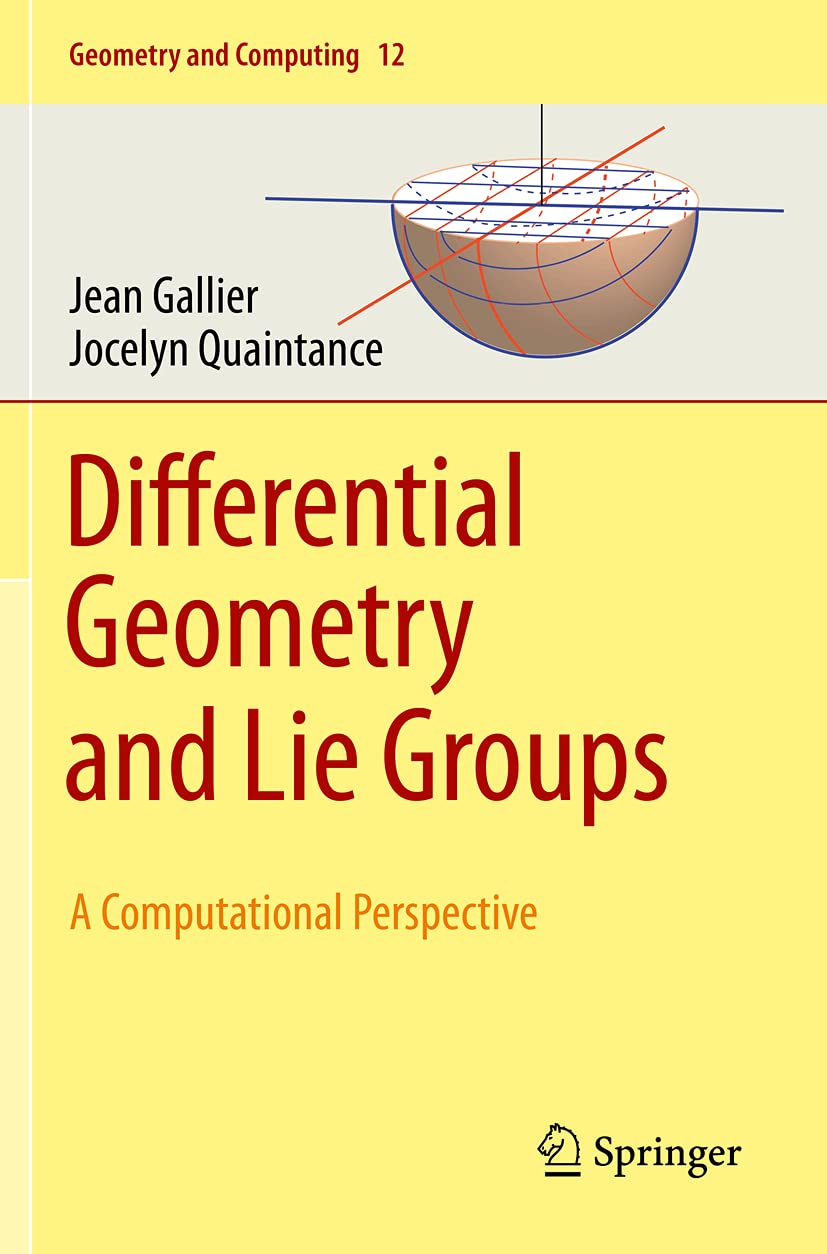Differential Geometry and Lie Groups: A Computational Perspective
Differential Geometry and Lie Groups: A Computational Perspective is backordered and will ship as soon as it is back in stock.
Couldn't load pickup availability
Genuine Products Guarantee
Genuine Products Guarantee
We guarantee 100% genuine products, and if proven otherwise, we will compensate you with 10 times the product's cost.
Delivery and Shipping
Delivery and Shipping
Products are generally ready for dispatch within 1 day and typically reach you in 3 to 5 days.
Book Details
-
Publisher: Springer
-
Author: Gallier, Jean
-
Language: English
-
Edition: 2020 ed.
-
ISBN: 9783030460426
-
Pages: 777
-
Cover: Paperback
-
Dimensions: 9.3 x 6.2 x 1.5 inches
About The Book
Differential Geometry and Lie Groups: A Computational Perspective by Jean Gallier, published by Springer, provides a modern and accessible introduction to differential geometry tailored for students and professionals working in geometry processing, computer vision, robotics, and machine learning. With 777 pages of comprehensive content, this 2020 edition is perfectly suited for classroom instruction or independent study, requiring only a background in calculus and linear algebra.
The text begins with an introduction to Lie groups and group actions, using the matrix exponential as a launching point. It then builds up manifold theory, including tangent and cotangent spaces, vector fields, and point-set topology. A dedicated chapter on manifold construction from gluing data bridges theoretical geometry with practical applications like 3D mesh reconstruction.
The second part of the book dives into Riemannian geometry, covering key topics such as Riemannian metrics, geodesics, curvature, submersions, and the Log-Euclidean framework. The final chapter introduces naturally reductive homogeneous manifolds and symmetric spaces, preparing readers to apply these concepts in manifold optimization techniques.
Packed with exercises and optional deeper explorations, this book offers a balanced approach to both computation and theory. It is an ideal gateway for those seeking a strong mathematical foundation behind many advanced computational applications. Readers planning to pursue deeper topics will benefit from the companion volume Differential Geometry and Lie Groups: A Second Course.





